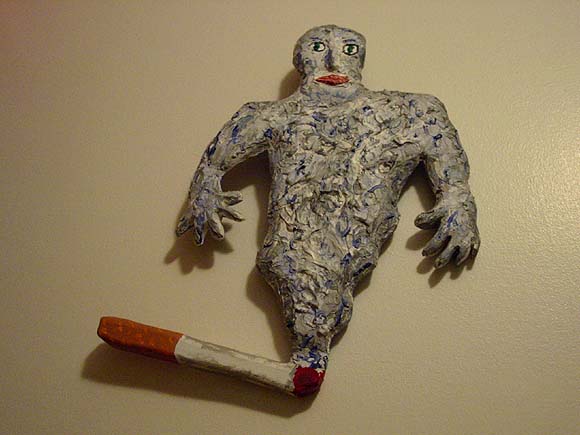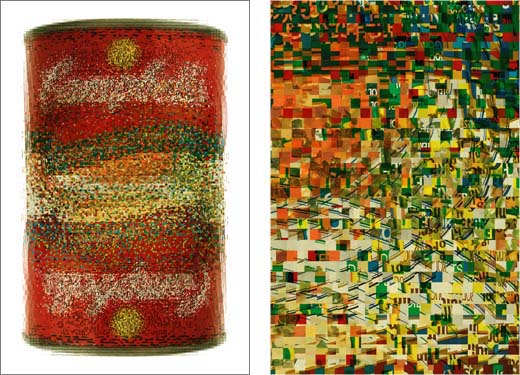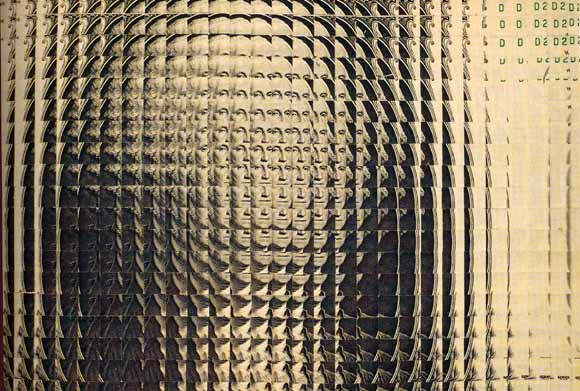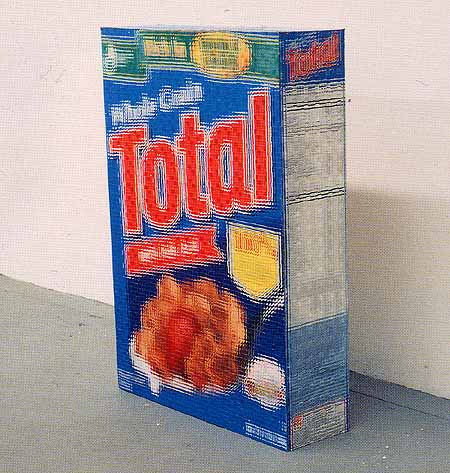View current page
...more recent posts
Tom Tomorrow thinks October Surprise the First was when Reagan cut a deal with the Iranians--"I'll give you guns if you wait till my inauguration day to release the hostages." He explains, therefore, it was kind of a "secret surprise." This is contorted. The actual history was, the October Surprise was what the Republicans feared in the 1980 election--that Carter would somehow secure hostage release right before the election. As long as we're exploding myths about the Carter era, do you think Carter wore a sweater to demonstrate energy conservation? Well, wrong! See this earlier post on the subject. It makes Republicans mad because they love their folklore as much as the Dems.
More on the increasing evidence that Pres. Bush cheats by using a wire in public appearances (including the debates): according to Dave Lindorff, who's been covering the story for Salon and Counterpunch, the Letterman Top 10 is emblematic that the media intends to treat it as a joke. The US media, that is. Lindorff says he was interviewed for an extensive story on Bush bulge that ran on international CNN but not in America.
The New York Times got criticized for calling Jacques Derrida abstruse in its obit headline, so it ran a Derrida-lovin' editorial (scroll down) by academic Mark C. Taylor as a way of making amends. Taylor declares Derrida, Wittgenstein, and Heidegger "the three most important 20th Century philosophers"--a thesis topic that reads like a TV news headline. It's like, all three must be continental philosophers, and we need one post-structuralist. So Derrida edges out Foucault and Lyotard because D. just died. The piece attempts to humanize him and make him warm and fuzzy for Times readers, talking about how important religion was to him. But Taylor's description of deconstruction mutes its dark side: as I understand it, Derrida was saying all sentences were hegemonic, i.e., territory conquering--Taylor softpedals that as "working by exclusion." Thus we don't use "grammatically correct," tightly-constructed sentences to study sentences, we play complex, punning language games that tease out their biases and inadequacies, which Derrida could apparently do well but not everyone has a gift for. The result is legions of mediocre sub-Derridas ensconced in college departments, making students hate reading. That's one reason Derrida's death is a slightly charged issue--it's not just because the neocons hate him.

The friendly spirit who lives in a cigarette watches over my kitchen and reminds me to eat my vegetables. The sculpture is by Thor Johnson, ca. 1990.
My predecessor Eyebeam reBlogger Beverly Tang has posted photos from her summer roadtrip, from the West Coast to Tennessee and back. My favorite are her shots of skies and sunsets from the moving car, particularly on the Arizona and Texas, Oklahoma, Arkansas parts of the trip. They're crisp, striking images in terms of pure old-fashioned photographic values, but they also conjure for me the loneliness of that part of the country, where I lived and drove for years--places where some days the sky is the only thing happening (that and cafeteria shootings).
Like everyone else in the blogosphere, I enjoyed watching Jon Stewart attack the CNN Crossfire hosts on their own show (I saw the Windows Media clip via BitTorrent). The only problem is the confrontation took place on Crossfire, which means reaction shots of the guffawing audience, a pre-prepared graphic of Stewart's softball Kerry questions designed to make Stewart look weak and stupid, the emphasis on gotchas and zingers that seems to be TV's sole reason for being, and, worst of all, the presence of the two toxic hosts, doing their best to get the better of their guest. Stewart's admission that he watches their show every day considerably weakened his case in my eyes. Attacking the show on the show innately smells of co-opting--it just provides more "good television."
From today's New York Times Magazine article on the zealotry of the Bush inner circle (and true believers everywhere), written by reporter Ron Suskind (liberated version here):
In the summer of 2002, after I had written an article in Esquire that the White House didn't like about Bush's former communications director, Karen Hughes, I had a meeting with a senior adviser to Bush. He expressed the White House's displeasure, and then he told me something that at the time I didn't fully comprehend -- but which I now believe gets to the very heart of the Bush presidency.Here's hoping that come November we get to collectively say, "Yeah, well, study this, motherfucker."
The aide said that guys like me were ''in what we call the reality-based community,'' which he defined as people who ''believe that solutions emerge from your judicious study of discernible reality.'' I nodded and murmured something about enlightenment principles and empiricism. He cut me off. ''That's not the way the world really works anymore,'' he continued. ''We're an empire now, and when we act, we create our own reality. And while you're studying that reality -- judiciously, as you will -- we'll act again, creating other new realities, which you can study too, and that's how things will sort out. We're history's actors . . . and you, all of you, will be left to just study what we do.''
Tools and Media: Arcangel, Maeda, Salavon, Friedman
In the comments to a previous post, twhid made a distinction between the computer as a medium and the computer as a tool, which prompted me to discuss a work by John Maeda that I believe fails as both, as contrasted with Cory Arcangel's famous Nintendo Clouds piece, which succeeds as medium, tool, and content all rolled into one. And I also talked about Tom Friedman's and Jason Salavon's work. This post is a revised, expanded version with pictures. twhid's comment:
Perhaps people are confusing these two things: are you using the computer as a tool or as the medium?And my repl(ies):
When your friend states "the resulting visual product is what matters." This means he's using the computer as a tool to a visual end. In this sense it doesn't matter, he could be using a pencil or camera or computer or eggplants to get whatever sort of visual "product" he's after.
But if one is using a computer as the MEDIUM (not simply a means to a visual end) then it seems one should have an understanding of that medium. And it's arguable that to understand a computer as a medium you really need to be able to program it.
Then of course we can start talking about using computer networks as a medium... :-)
I've been trying to keep the discussion confined to computer-made art that winds up in the "gallery discourse," or what's left of it. The use of programming in network-based art I consider a slightly different topic. As an example of the former, what is Cory Arcangel "after" in his Nintendo Clouds piece? If it's a big Barnett Newman field he probably could use eggplants (or blue squid ink) to make it. But it's more than that--it's a work where the computer is the tool, the medium, and (at least partially) the subject matter. It works on a pure visual level (a big expanse of seductive blue with wry found imagery), as a medium (the hacked cartridge as ambient video), and has something to say to hackers and non-initiates alike about the malleability of (digital) reality, through the subtraction of information from familiar game iconography. Whether someone could arrive at something that successful without a stitch of programming knowledge is one of the questions I'm asking.

A piece that fails on all these levels is the above cibachrome print from 2002 by John Maeda, where he digitally sampled "all the Campbell's soup cans Warhol used" (as one review phrased it) and made a kind of iterative, vibrating composite. No doubt he did his own programming to realize this, but Tom Friedman, at Feature Gallery, had famously achieved a similar visual effect with a probabilistic dollar bill a couple of years before, using scissors and sheer patience. Friedman's was a well known piece in the art world, an analog design that evoked digital processes. Below is just a detail--the entire dollar is done like this, using actual cut up bucks, so the piece is about three feet long:

The subtle gradations between image "steps" are very trippy and disorienting, ditto seeing the familiar paper moneystuff on such a large scale. A similarly done self portrait by Friedman is online here (scroll down). As the accompanying text explains it, "Friedman dissected and re-configured 256 small, identical passport-style photographs into a large abstract self-portrait. The individual self-portraits were cut into 1/4-inch grids based on a series of nearly imperceptible 1/64-inch deviations. The 33,072 resulting squares were arranged, one by one, to create a large magnified, out-of-focus mosaic of the original image."
Maeda's soup can doesn't stretch in space but has the same hazy, micro-composite shimmer as Friedman's cut-up projects. (I don't actually consider Friedman's to be digital work, I bring it up to provide a context that previous discussion of the can has lacked.) Conceptually, and even more damning, the can is derivative of Jason Salavon, who has been making similar visual composites for years, through computer-derived averaging of like images (class pictures, Playboy Playmates, etc.) (And before Salavon, Nancy Burson...) Choosing Campbell's soup as subject matter is supposed to be "deconstructing" Warhol, one guesses, but it's a hackneyed reference. Both Salavon and Friedman know recent art history and the approximate place their work fits into it, whereas Maeda is a designer with art aspirations who admits to not following contemporary art (scroll down). Yet Maeda is showing at the London ICA and the Fondation Cartier as an artist, for reasons I don't entirely fathom (at least according to his 2002 catalog--I can't find any online reference to those shows, supposedly scheduled for 2003 and 2005, respectively).
Other Maeda work is here (I like 1, 2, and 4 but then he starts to lose me). And below is another Friedman piece that puts the can to shame. It is not out of focus; it's actual cereal boxes cut up the same way the dollar is above:

Update, December 2005: The links above to the Maeda pieces on the Cristinerose website are dead, sorry. Maeda's work did in fact get shown at the Fondation Cartier.
Update, 2011: Maeda "Food" catalog reposted as PDF
